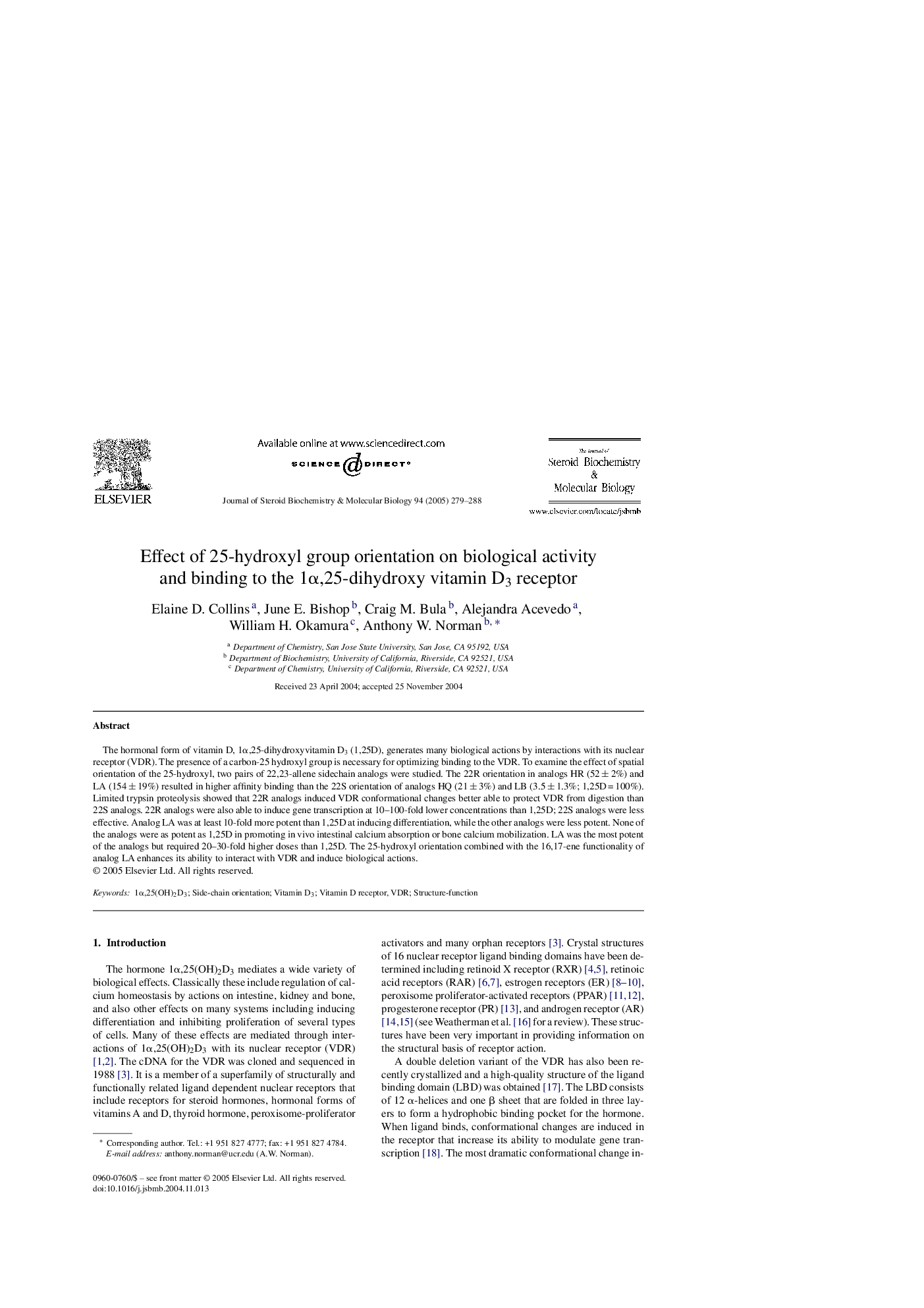| Article ID | Journal | Published Year | Pages | File Type |
|---|---|---|---|---|
| 9892161 | The Journal of Steroid Biochemistry and Molecular Biology | 2005 | 10 Pages |
Abstract
The hormonal form of vitamin D, 1α,25-dihydroxyvitamin D3 (1,25D), generates many biological actions by interactions with its nuclear receptor (VDR). The presence of a carbon-25 hydroxyl group is necessary for optimizing binding to the VDR. To examine the effect of spatial orientation of the 25-hydroxyl, two pairs of 22,23-allene sidechain analogs were studied. The 22R orientation in analogs HR (52 ± 2%) and LA (154 ± 19%) resulted in higher affinity binding than the 22S orientation of analogs HQ (21 ± 3%) and LB (3.5 ± 1.3%; 1,25D = 100%). Limited trypsin proteolysis showed that 22R analogs induced VDR conformational changes better able to protect VDR from digestion than 22S analogs. 22R analogs were also able to induce gene transcription at 10-100-fold lower concentrations than 1,25D; 22S analogs were less effective. Analog LA was at least 10-fold more potent than 1,25D at inducing differentiation, while the other analogs were less potent. None of the analogs were as potent as 1,25D in promoting in vivo intestinal calcium absorption or bone calcium mobilization. LA was the most potent of the analogs but required 20-30-fold higher doses than 1,25D. The 25-hydroxyl orientation combined with the 16,17-ene functionality of analog LA enhances its ability to interact with VDR and induce biological actions.
Related Topics
Life Sciences
Biochemistry, Genetics and Molecular Biology
Biochemistry
Authors
Elaine D. Collins, June E. Bishop, Craig M. Bula, Alejandra Acevedo, William H. Okamura, Anthony W. Norman,
